
Optimal automation and controls
Get a control systems integration strategy for your capital project.The benefits of control systems integration start at the plant floor and multiply all the way up the manufacturing value chain to the boardroom. The goal is to eliminate islands of automation by establishing channels for purposeful data exchange between technologies, networks, OEM-provided equipment, and other data sources.
This flow of operational and manufacturing data feeds the plant’s higher-order business systems, helping facility leaders make confident decisions in the areas that matter most: production targets, labor strategy, quality systems, and much more.
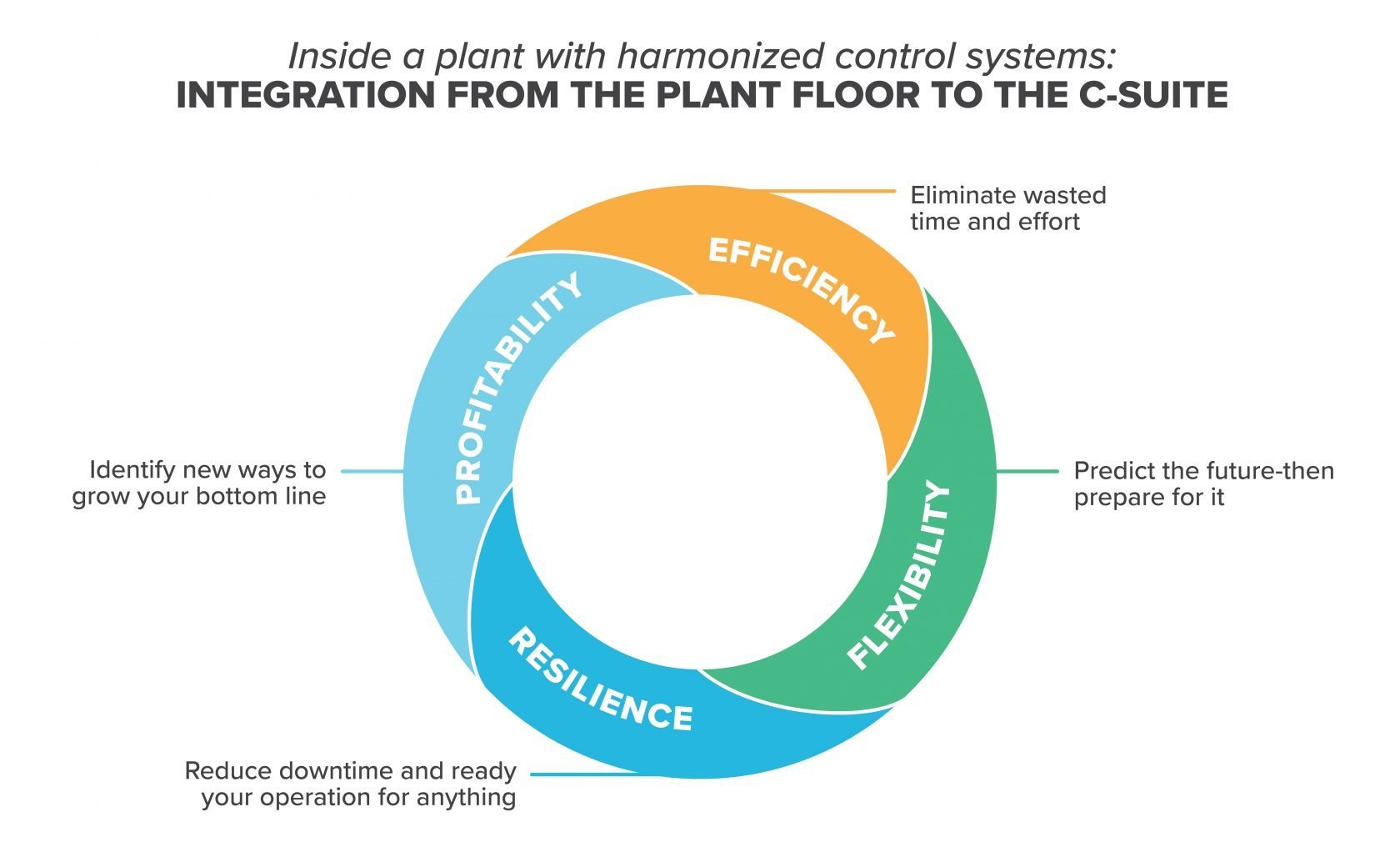
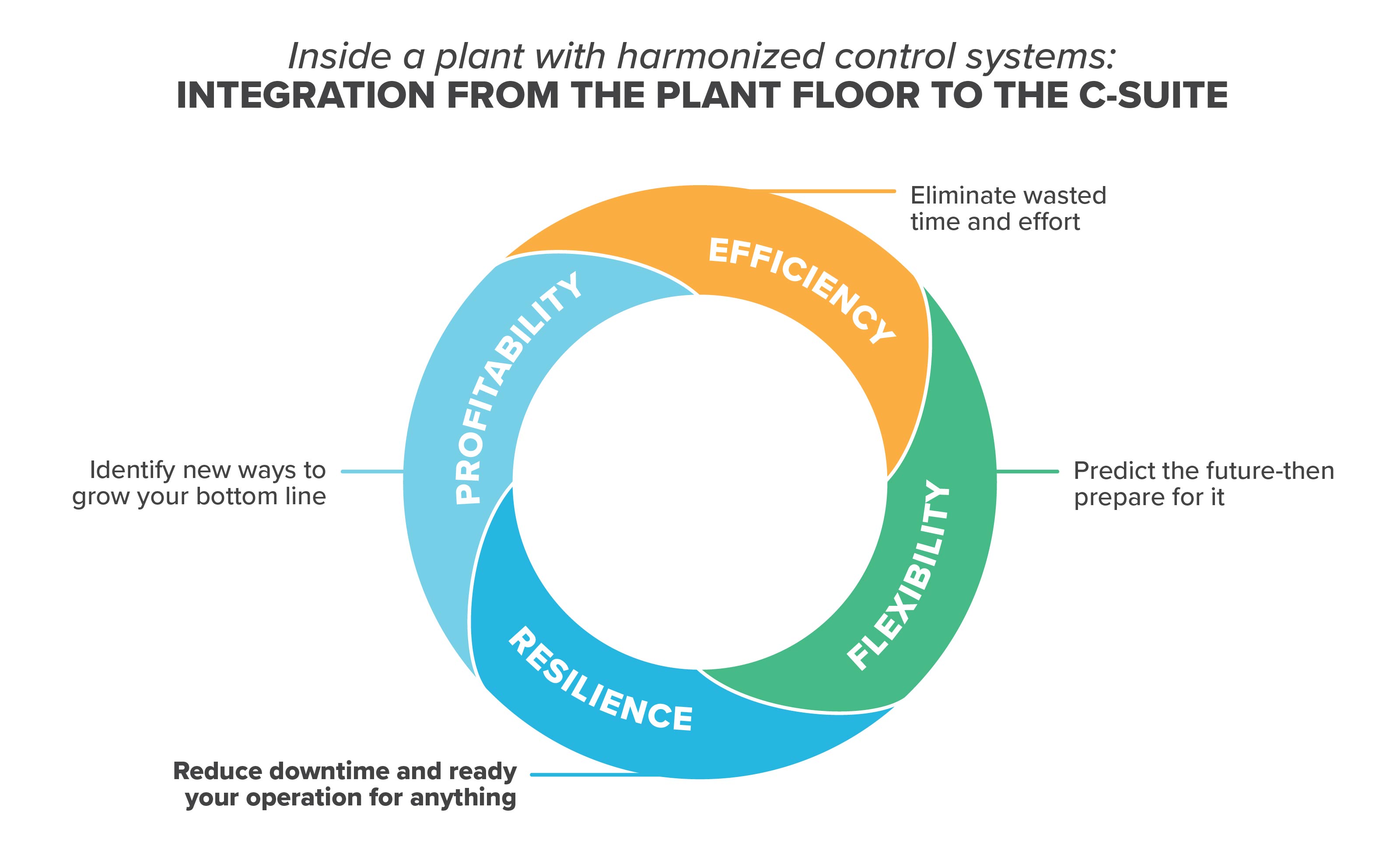
PROFITABILITY
Identify new ways to grow your bottom line.
- Connect critical business functions and share insights across the value chain
- Eliminate data bottlenecks between ERP and MES platforms
- Redistribute workflow to maximize cost-effectiveness
RESILIENCE
Reduce downtime and ready your operation for anything.
- Receive early warnings of potential machine issues
- Accelerate Mean Time to Repair (MTTR) with proactive maintenance
- Limit dependence on the labor market through intelligent automation
EFFICIENCY
Eliminate wasted time and effort.
- Align process design with desired operational outcomes
- Accelerate speed to market by reducing manual tasks
- Transfer knowledge rapidly and reduce training time
FLEXIBILITY
Predict the future—then prepare for it.
- Establish pathways for future integrations and rapid scale-up
- Adapt production targets in step with shifting consumer demand
- Manage inventory proactively and automatically
For your own control systems integration strategy to work hard on your behalf, helping you to generate more value from your operations today and make better decisions about tomorrow, your strategy needs to be grounded in a few key elements. We’ll unpack each one in this article.
- Good control systems integration planning starts on day one of the capital project delivery lifecycle.
- Control systems integration is not a functional layer that sits on top of a facility design; it is facility design, or a component of it. Your control systems integration team should work alongside process and facility engineers to align early design decisions with the plant’s overall controls philosophy.
- Input from people representing operations, maintenance, quality, and other teams across the plant is key. Bringing in this multi-disciplinary perspective on early design and process planning activities will lay the groundwork for a resilient and meaningful control systems integration strategy.
The role of a control systems integrator does not end with project startup. The technology environment that supports control systems integration requires ongoing maintenance, upgrading, and optimization to keep pace with digital innovation from OEMs, shifts in marketplace dynamics, and evolving internal priorities.
Terms to know:
Roles and concepts
Behind every successful control systems integration initiative are two critical elements: a control systems integrator with extensive experience, and a unique controls philosophy developed in collaboration with project stakeholders.
Control systems integration eliminates islands of automation and optimizes facility operations by integrating technologies, networks, control system hardware and software, OEM-provided equipment, planning systems, and other data sources. The benefits of control systems integration start at the plant floor and multiply all the way to the boardroom, where decision-makers have expanded visibility into the operational data they need to build resilience and plan for success.
A control systems integrator works closely with project stakeholders to design, implement, and maintain a tailored control systems integration strategy from kick-off to well beyond facility start-up.
A manufacturer’s controls philosophy defines its current and future needs in terms of data automation and integration. The controls philosophy is typically developed early in the project delivery lifecycle with expert guidance from your control systems integrator, who will use this philosophy as an important input during facility and process design.
Technologies and data systems
Control systems integration harmonizes these discrete systems, helping decision-makers access and interrogate the operational data they need to optimize their facility and plan for future success.
This industrial computer is the key to process automation. It is programmed to capture data from automated systems, process that data through an internal logic engine, then dispatch operating instructions through its outputs.
By integrating PLC data into a larger data ecosystem, control systems integration makes operational insights available to help drive enterprise-level decision making.
The PCS integrates discrete components such as PLCs, HMIs, SCADAs, OEM skids, and field instrumentation into an overall plant system capable of controlling and monitoring the manufacturing process.
The journey from ideation to final product and, eventually, disposal of that product is complex. PLM systems help manufacturers manage and control that complexity by collecting data from every node along the chain, including supplier data, documentation, quality workflows, and much more.
By harnessing PLM data as part of an overall integration strategy, control systems integration seeks to give manufacturers a more complete and nuanced picture of their operations.
The MES monitors and controls the end-to-end production lifecycle, from raw material inputs to finished goods. As a bridge between the PCS and ERP, the MES is critical to driving and optimizing the plant’s overall performance.
From a control systems integration perspective, the MES is a facility’s nerve center; by integrating it with other systems, manufacturers can generate more value from their data, and use it to drive more impactful decisions.
Organizations use ERP software to manage everyday business activities, as well as to monitor performance over time and predict future outcomes.
Tying operational data into the ERP can give organizations greater visibility into the factors that impact resource allocation, quality, overhead, delivery times, and other mission-critical variables.
What is control systems integration?
When the term “digital transformation” first swept the industrial world, it heralded a migration from paper to pixels across all levels of the manufacturing value chain. Vendors began designing automation into their equipment systems, manufacturers embraced the opportunity to accelerate and improve production, and operators adapted to a world with fewer repetitive manual tasks.
In terms of true digital transformation, this migration ticked the first box: it digitized the plant floor. Where only paper-based operations existed before, now there were silos of automated processing—an important step change. But to tick that second box, transformation, manufacturers need to go beyond basic automation. They need integration.
In a modern facility powered by integrated systems, you won’t find the islands of automation and operational silos common to those earlier days of automation. Instead, you’ll find a consolidated technology environment that creates pathways of communication between vendor-supplied subsystems, makes operational data available to support critical business functions, and drives better decision-making from the plant floor all the way to the C-suite.
Think of it this way: if the shift from manual processes to basic automation was like going from walking to running, then integrated automation means knowing where you’re running to—and seeing hazards before they trip you up.
When you have access to an integrated, intelligent network of operational data, your plant becomes easier to manage and operate, which improves your performance in a fast-moving and turbulent marketplace. That’s control systems integration in action.
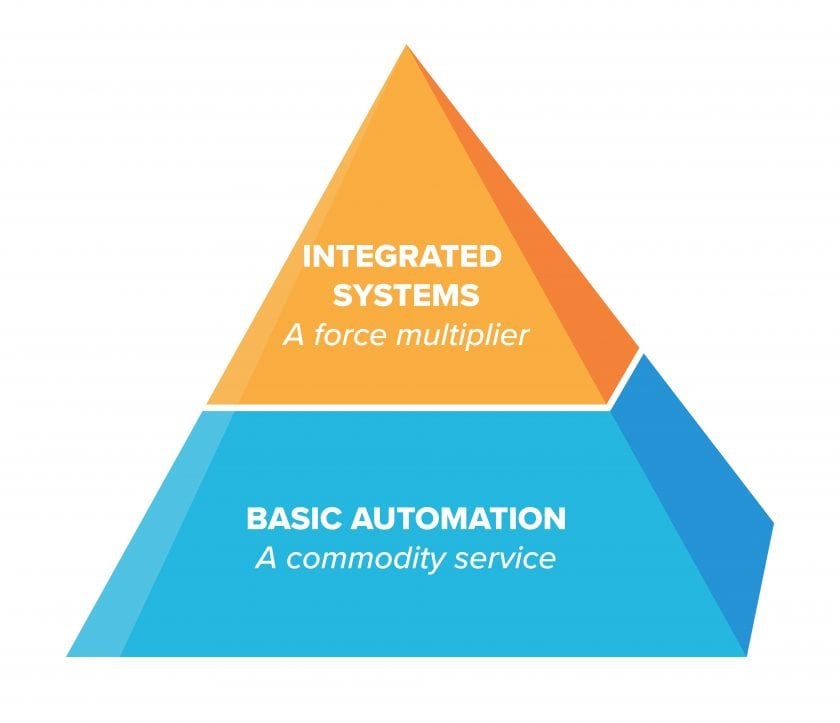
Integrated systems: A well-designed network replaces islands of automation, creating a technology environment in which process, ERP, MES, and PLM data converges to give manufacturers a clear and comprehensive picture of how their plant is operating.
Basic automation: At its most basic, automation is really just equipment control. More advanced automated equipment systems may generate data, but without proactive integration, that data is trapped in an operational silo where its usefulness is limited.
What is a control system integrator?
A systems integrator is responsible for designing, implementing, and maintaining the control systems integration strategy. This person—or team of people—works closely with project stakeholders to define their controls philosophy (we’ll cover that later) and to ensure that the project’s scope and approach aligns with that philosophy.
To make that alignment happen, the systems integrator typically collaborates with experts from multiple functional areas across the project delivery value chain, providing a “translator” role that harmonizes and integrates the needs of various project stakeholders.
An important part of this collaborative approach involves engaging the downstream operations team in upstream project design and delivery activities. By bridging these groups from day one, the systems integrator can help project teams lay important groundwork for a control systems integration implementation that will drive desired outcomes from a product-to-process point of view.
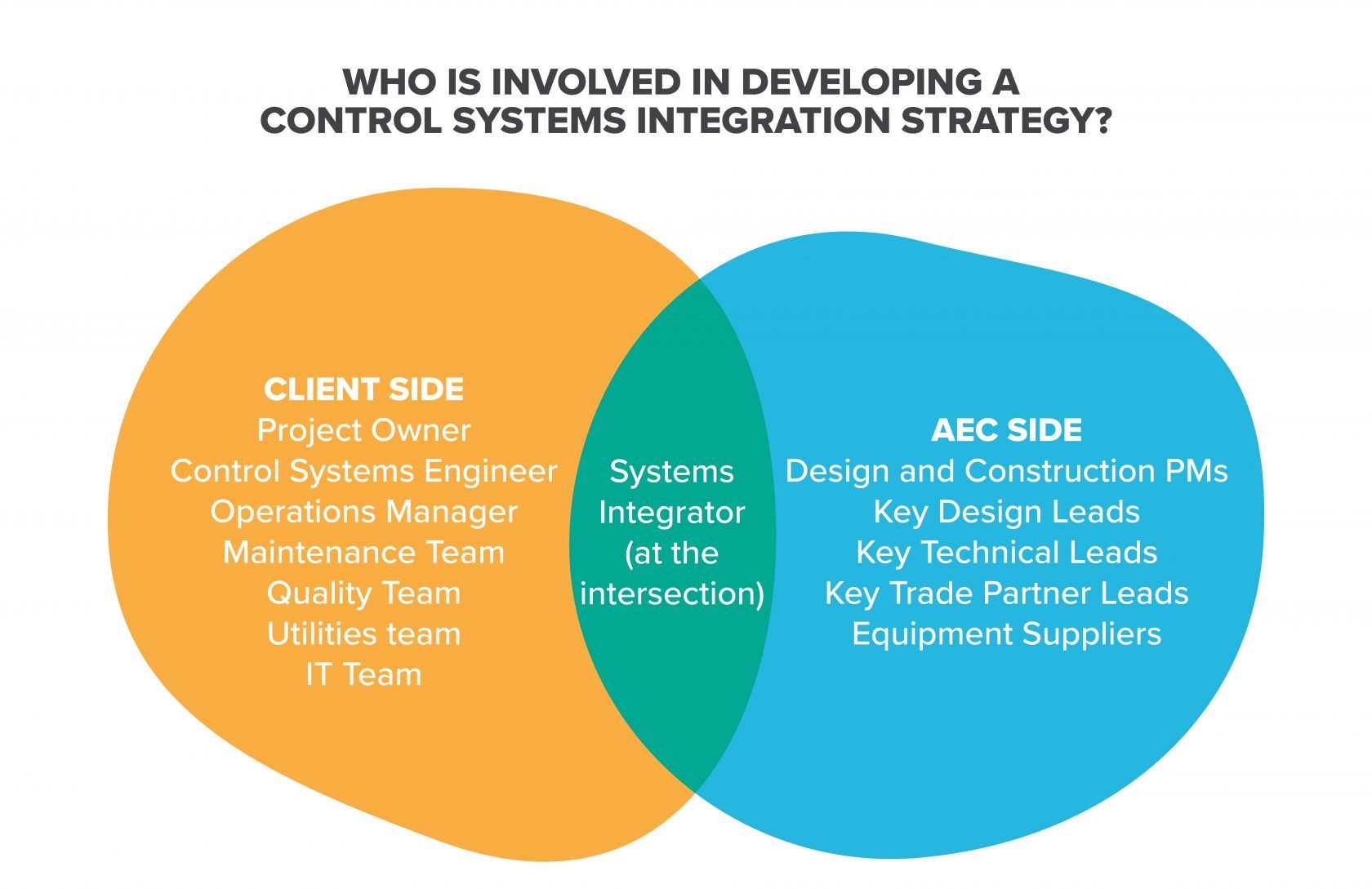
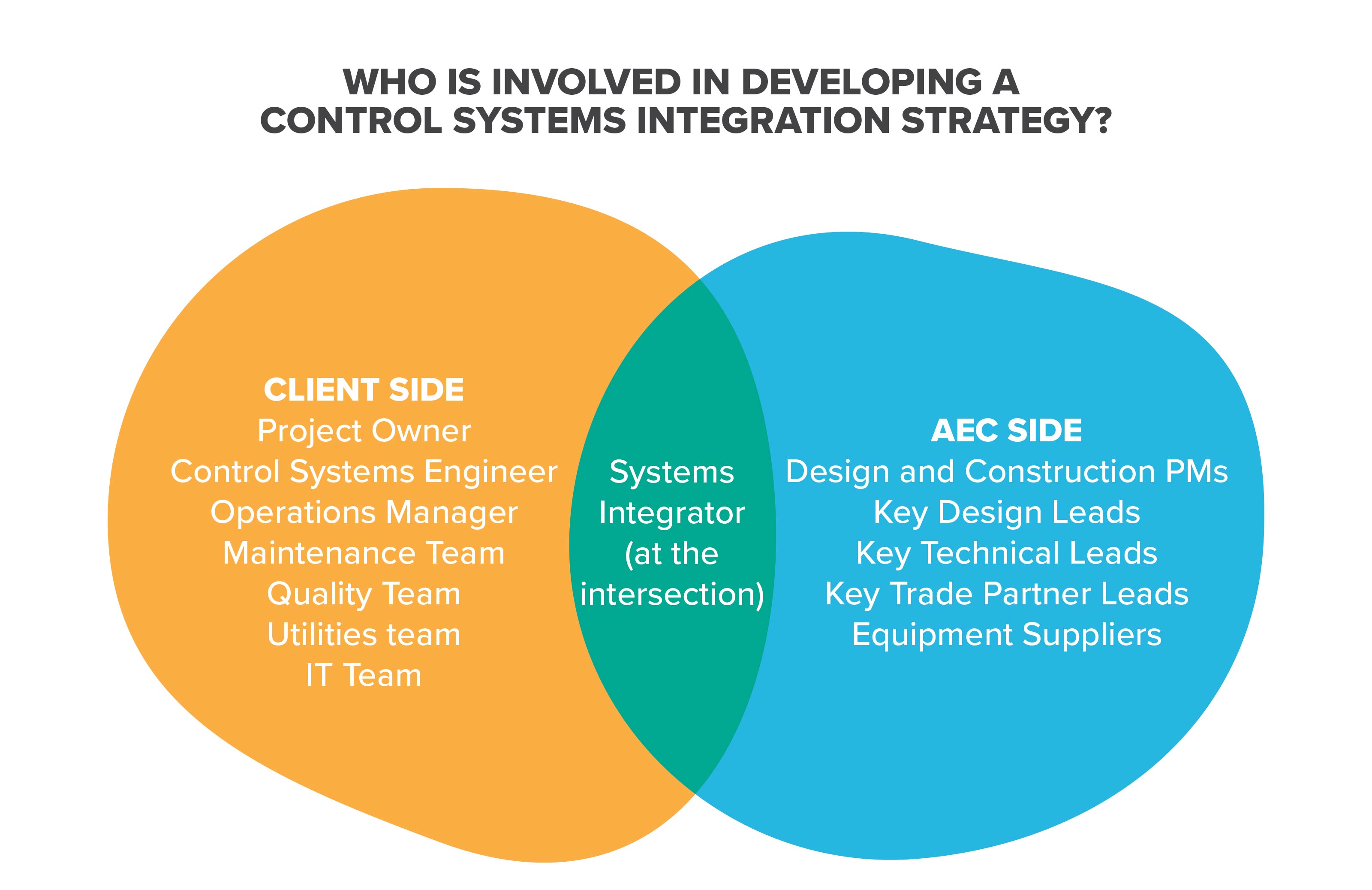
A good systems integrator typically offers the following:
- Applied experience working within the end-to-end manufacturing lifecycle, from plant-floor operations to complex enterprise-level business planning.
- Extensive knowledge of automation technologies and best-in-class network design and security strategies.
- Experience understanding and consolidating a broad range of equipment from multiple vendors, and fluency in the languages of ERP and MES infrastructure.
- Expertise in collecting and integrating data streams from diverse sources, including internal systems, OEM-provided equipment, and more.
- The collaborative and analytical skills needed to work alongside clients in mining operational data for actionable information.
- A deep understanding of the regulatory requirements governing specific industries, and familiarity with relevant business areas and marketplace dynamics.
- A good cultural fit and a team-oriented, solutions-driven approach.
Who needs control systems integration?
From dairy to pet food, manufacturers in every industry face obstacles both unique and universally shared in today’s turbulent marketplace, including quality and cross-contamination challenges, regulatory complexity, and the high cost/low availability of skilled labor.
At the same time, manufacturers across these industries are focused on reaching the market quickly and on scaling their operations to meet increased demand. In CRB’s series of survey-backed industry reports, we take an annual snapshot of this growth mindset, which reveals just how much manufacturers across different sectors are investing in the future of their operations:
- From Horizons: Alternative Proteins (2021): Average CapEx spend of $41M over the next three years
- From Horizons: Pet Food (2022): Average intended spend of at least $19M over the next five years
Formidable manufacturing challenges on one hand, aggressive capital spending on the other—how can manufacturers navigate all of this pressure while getting the most from every dollar invested in their plant?
The answer: Data ⇨ Insights ⇨ Actions
Manufacturers need real-time operational data that’s collected from the plant floor, meaningfully consolidated with enterprise-level insights, and made accessible in ways that are useful for different roles within the organization. And the only way to get there is by implementing a tailored control systems integration strategy.
Control systems integration is not one-size-fits-all.
A control systems integration strategy isn’t a rigid tool—it’s a flexible and constantly evolving component of your operation. That’s what makes control systems integration so useful: when it’s appropriately tailored and maintained, it becomes a pathway to answering the questions that matter most to your unique situation, including questions that you may not have thought of yet.
For example:
- Food manufacturers: How can I prepare my plant for a rapid response to shifts in consumer demand?
- Beverage manufacturers: How can I avoid unnecessary downtime by predicting potential mechanical issues before they impact my plant’s productivity?
The process of designing and right-sizing a control systems integration strategy that answers your most relevant questions, both today and into the future, starts with your controls philosophy.
What is a controls philosophy, and why should you have one?
The goal of a controls philosophy is to define an organization’s current and future needs in terms of integrated automation and data harmonization. Your systems integrator will work with you early in the delivery process to document that vision in a controls philosophy, which will become an important input during facility and process design phases.
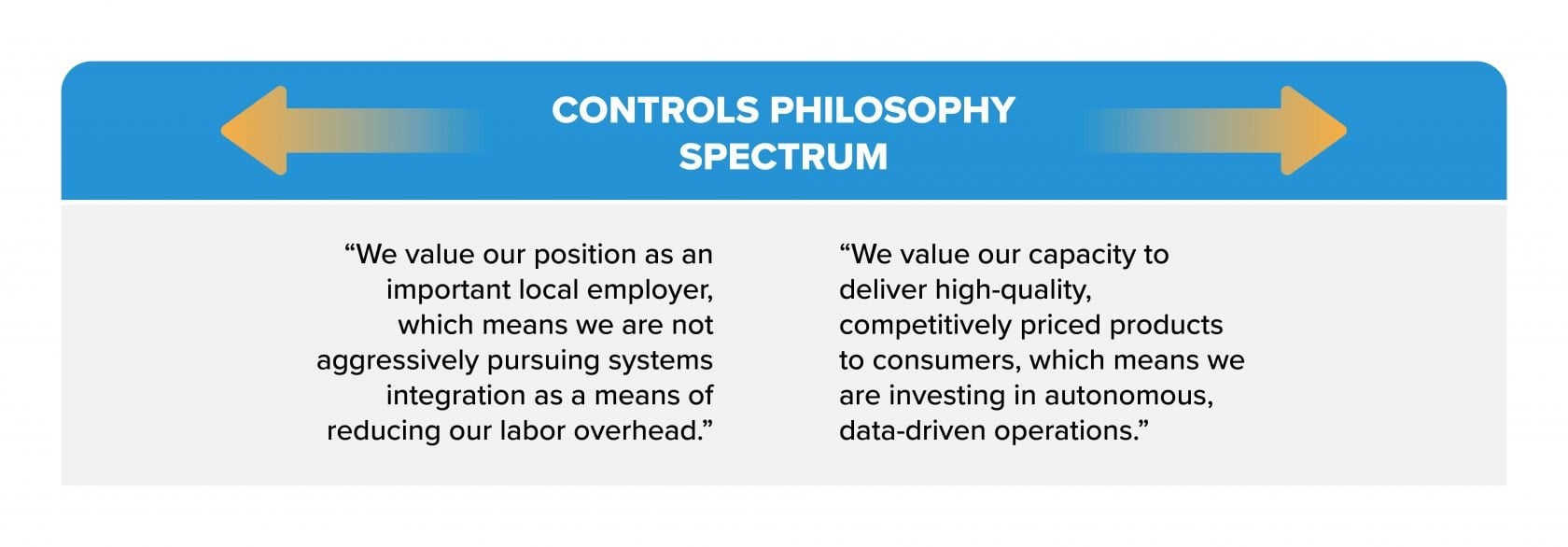
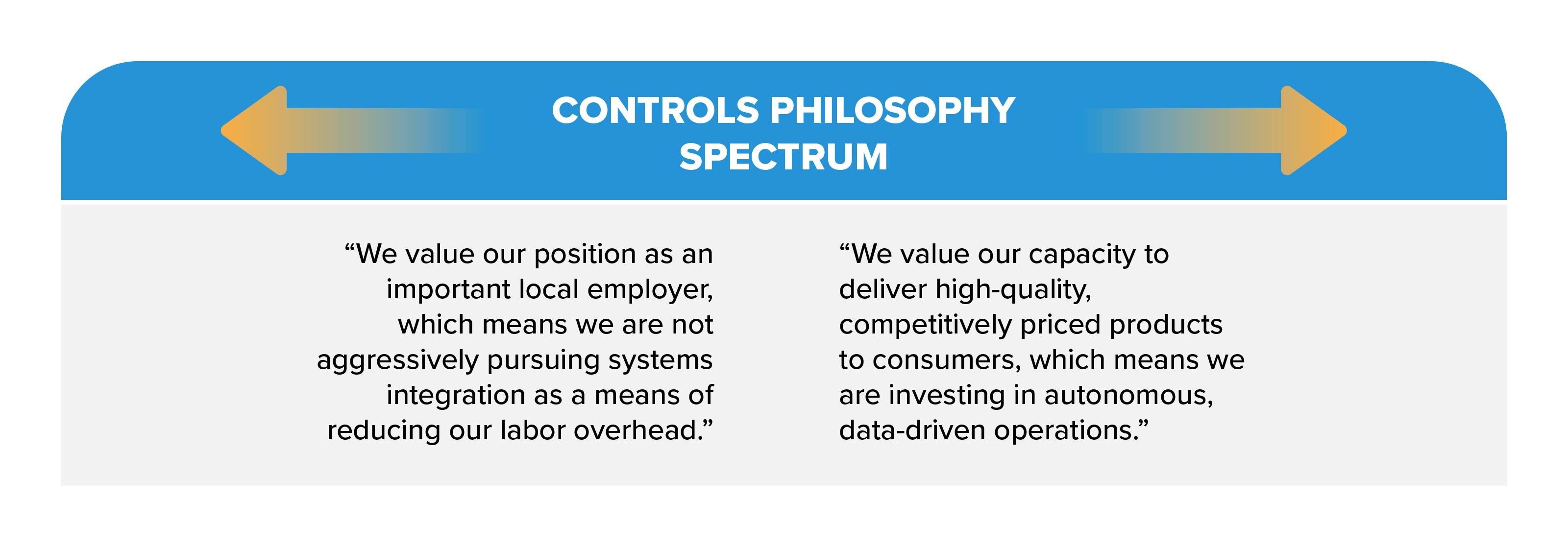
We saw the full range of this spectrum in our Horizons report series. We asked 500 respondents to identify their current and future position on the Digital Plant Maturity Model (DPMM), as defined by the BioPhorum Group; nearly 20% aspire to a Level 1 or 2 plant within the next three years, while the same proportion are aiming for Level 5—that is, a fully adapted, autonomous facility.
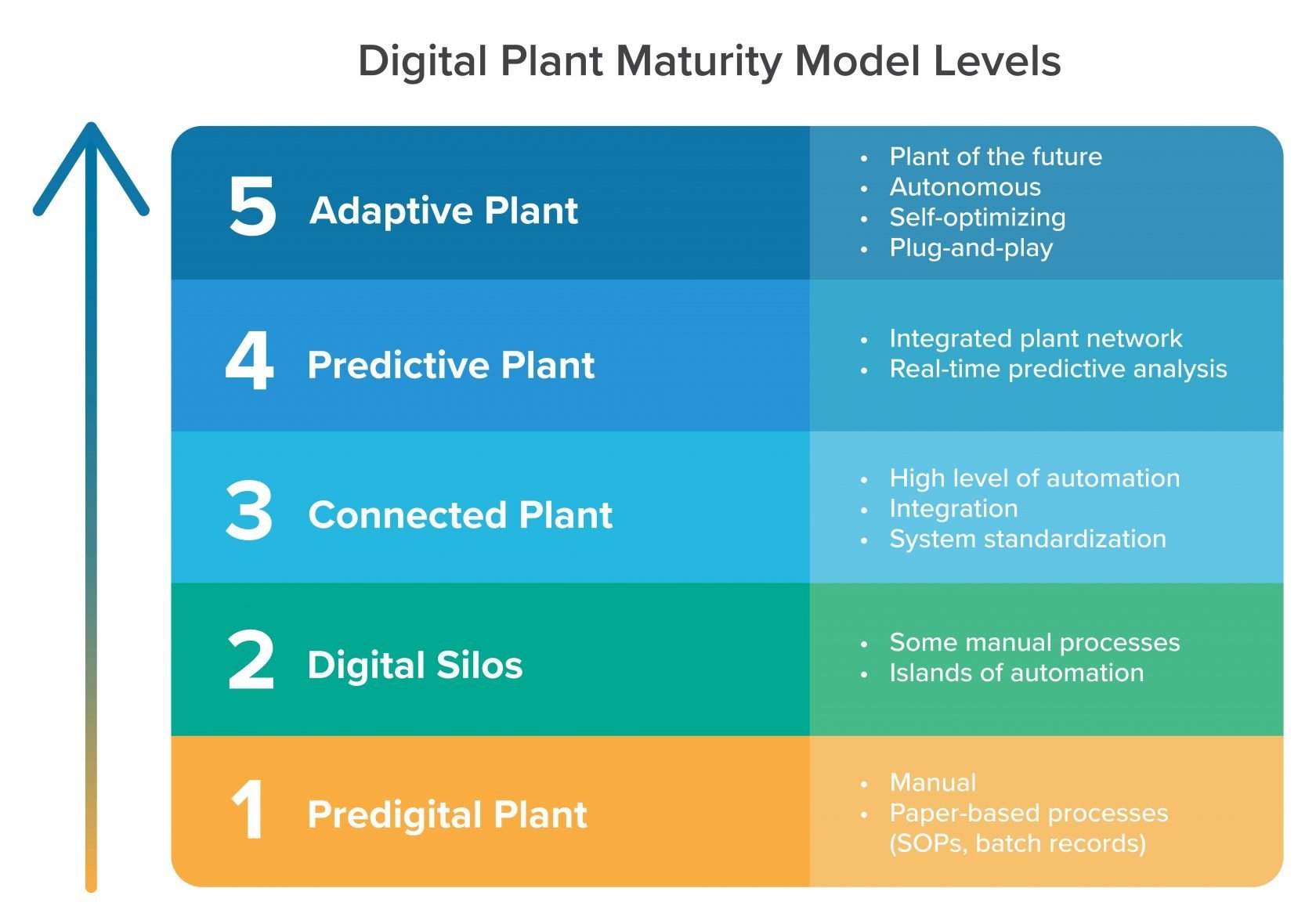
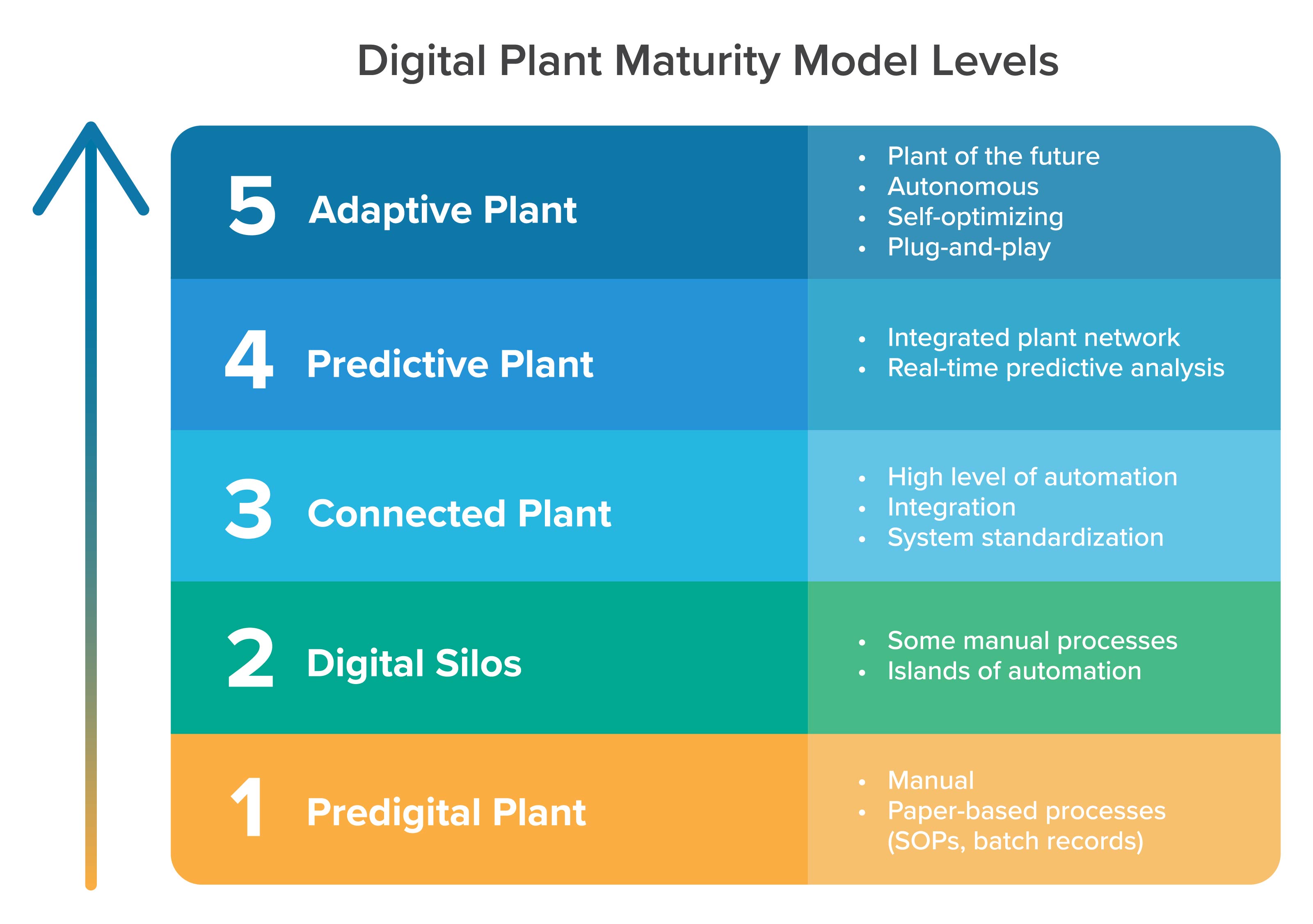
Though they’re operating at different ends of the digital transformation spectrum, each of these companies needs a robust controls philosophy to help them design an appropriate control systems integration strategy and align that strategy with their future needs.
Consider, for example, a startup that’s establishing their pilot manufacturing plant. They may not plan to collect operational data from day one, but where do they see themselves in the future? By establishing a controls philosophy early on, project teams can proactively answer that question and establish the necessary infrastructure to support the rapid adoption of integrated systems down the line. As a result, manufacturers can stay agile while avoiding the expense and downtime of a future retrofit.
When does control system integration happen?
Control systems integration should begin in the earliest phases of project delivery.
This is an important shift away from historic approaches when automation was a commodity service that owners could bolt on a few months before delivery. But as automation grows more sophisticated, and as integrated automation establishes itself as the key to operating an intelligent, adaptive, and resilient manufacturing plant, project owners should think of their control systems integration strategy as a key component of successful project delivery—a component that’s necessary from day one.
When control systems integration experts work alongside process engineers and other early stakeholders, they’re able to ask questions about design intent, pressure-test system designs against the project’s business case and values, and optimize the overall design for seamless execution of the control systems integration strategy.
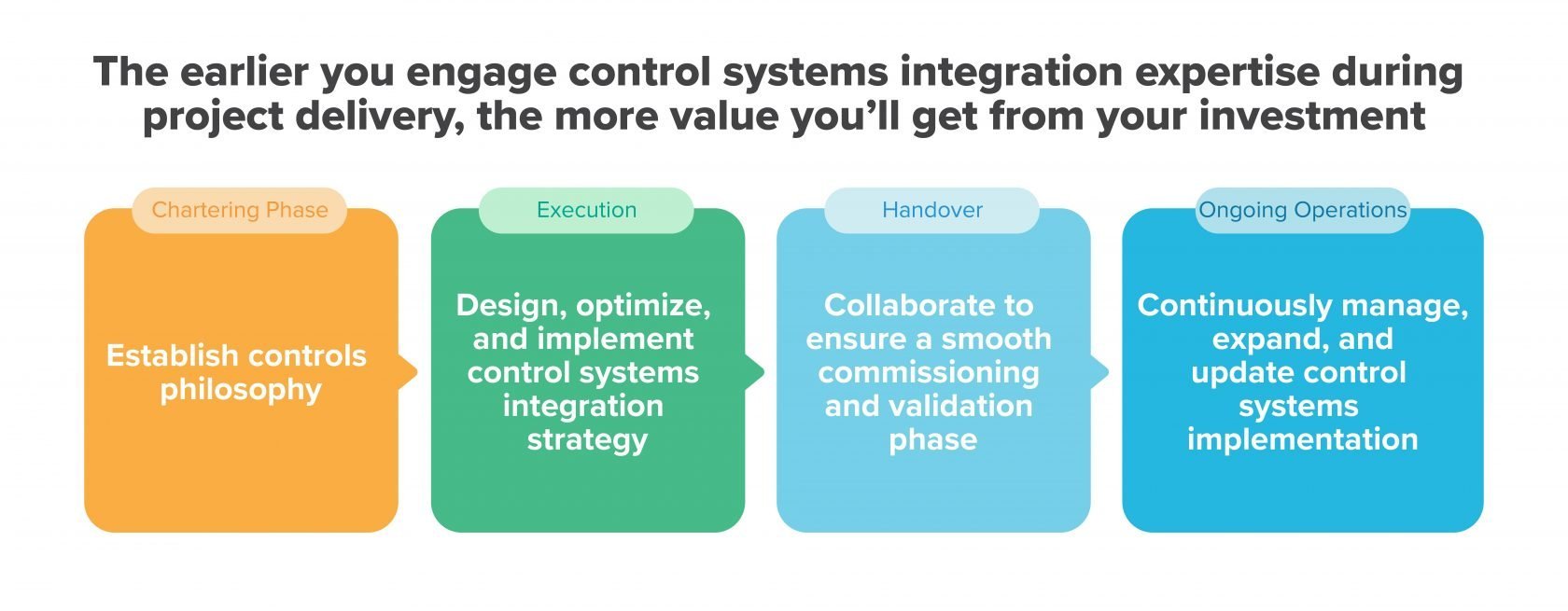
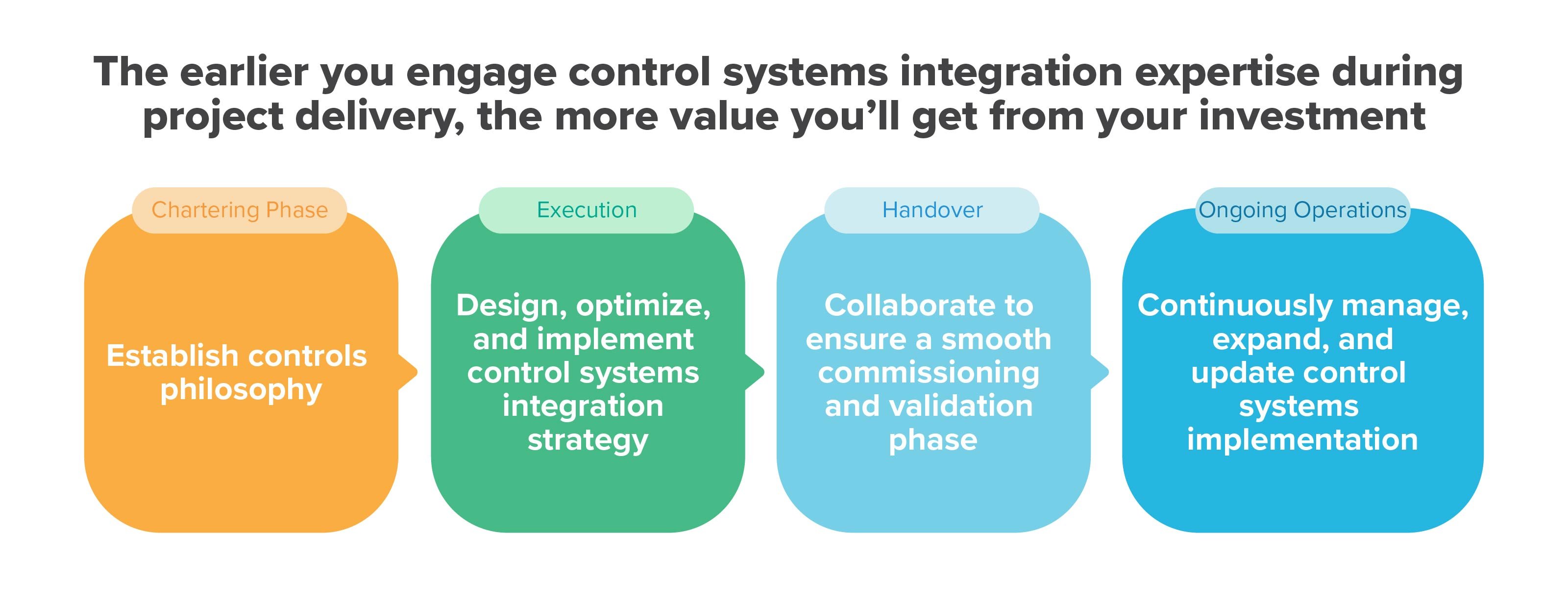
Very often, this kind of upfront control systems integration work reveals opportunities to adapt a plant’s design in order to improve its density, eliminate wasted space, or lay the foundation for future scalability and innovation.
For example:
- Will operators use tablets to monitor plant operations and track data? If so, the plant will need a secure wireless network in place. If you know this up front, you can design a digital backbone into the facility layout that will facilitate and accelerate the future implementation of wireless capabilities. This foresight will also alert you to the need for climate-controlled server rooms—another consideration when allocating facility footprint.
- Will the facility operate with intelligent, networked motor control centers (MCCs), or will it use a simpler solution? Answering this question early in the design phase will give project teams the head start they need to order the necessary equipment, which could avoid startup delays caused by long lead times. Answering questions like these will also help the design team to right-size the facility’s control rooms.
- How will receiving systems and load-outs work? Will the facility post an operator in a guard shack for manual check-in, or will it feature a digital system that invites drivers to scan themselves in? Will load-outs happen manually, or will they rely on an automated system? These questions will help optimize the layout and operation of facility warehousing, potentially accelerating and de-risking receiving operations.
- How will the control systems integration strategy impact workforce size and composition? If your control systems integration strategy leads to a smaller workforce, then you won’t just need a smaller control room—you will also want to shrink your amenity spaces, locker rooms, parking lots, etc., freeing that square footage for more valuable uses.
A good control systems integration strategy may also mean rethinking who is part of your labor strategy. Maintaining a complex network of integrated systems requires a specific skill set. Some plant owners build these skills into their workforce over time; others rely on a close relationship with third-party control systems integration experts—often those involved in the capital project delivery—who operate as extensions of the internal team, offering ongoing support for deeply integrated facilities.
How does control systems integration happen?
By now, we’ve established that project teams should develop a control systems integration strategy early in the delivery lifecycle, and that those efforts continue after facility turnover. But between those two points in time, what actually happens?
Just as every control systems integration strategy should be uniquely tailored to the values and vision of the company, so too does every design and implementation approach vary. Broadly speaking, though, your systems integrator will follow a few key steps.
- The systems integrator works with the owner to discover and document the project’s objectives and constraints vis-a-vis automation and data collection, and consolidates those discussions in a robust controls philosophy.
- The essential question at this point is, “What is the value you need from this project today and into the future, and how can integrated automation help you maximize that value?”
- The essential question at this point is, “What is the value you need from this project today and into the future, and how can integrated automation help you maximize that value?”
- The systems integrator engages with the process and facility engineering teams to pressure-test designs against the project’s controls philosophy, with input from the operations team. The goal is to think beyond the build aspects of capital delivery (square footage allocation, equipment selection, construction strategy) and incorporate the operational aspects (end user requirements, dependencies between unit operations, etc.).
- The essential question at this point is, “How will you operate your plant the day it’s handed over, and how do you anticipate operating it in two, five, and ten years?”
- The systems integrator collaborates with OEM vendors to identify and specify controls hardware and establish a plan for successful equipment integration.
- The essential question at this point is, “How can we strategically bring order to a plant floor that features equipment from different vendors, which generate data in different formats?”
- If Steps one through three have been rigorously applied, then checkout, commissioning, and startup—which happens at this stage—is a smooth and rapid process.
- The essential question to help guide this process is, “How can these integrated systems help to ensure that this facility and its equipment function as required?”
- Because of the intimate facility knowledge they develop during project delivery and startup, the systems integrator is an ideal partner for continued advisory and delivery services following facility turnover. They can monitor, optimize, and maintain the integrated system through vendor changes, production scale-up, pipeline expansion, and other dynamic shifts that impact manufacturing facilities over time.
- Throughout the lifetime of the facility, the essential question is, “How can we ensure that this integrated system of process, ERP, MES, and PLM data continues to deliver value and provide the insights we need to meet our evolving production and quality requirements?”
Bottom line: control systems integration is a powerful strategy
Data is king in the manufacturing world. Harness it well, and you will learn from the history of your operation to better understand its current potential and map its future success; lose control of it, and you’ll miss a critical opportunity to stay ahead of the competition.
Today’s forward-thinking food and beverage manufacturers are securing their place in the former category by investing in intelligent, forward-thinking control systems integration. Reach out to our control systems integration team to get more value from your next capital investment.



